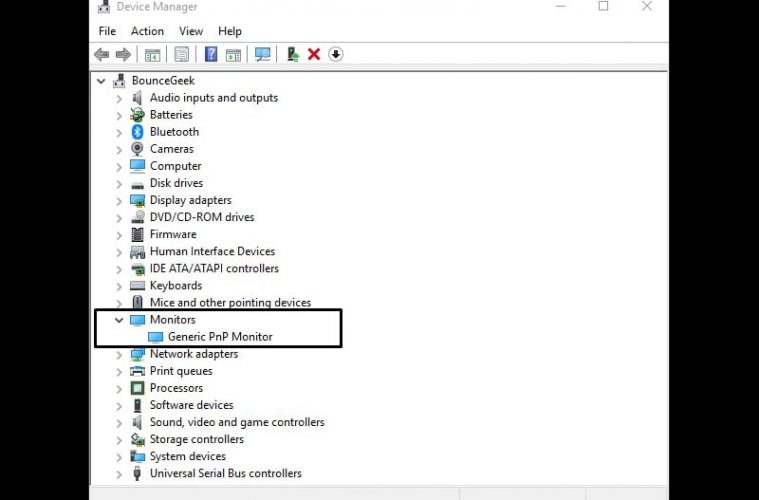I came across this problem from a customer who brought his computer to my attention.
Now, if the Generic PnP Monitor Windows 10 comes up within the Device Manager, then it means that the OS cannot recognize the monitor. When the Windows OS installs a generic monitor driver, then often the monitor is unable to work or function properly. As a result of that, you cannot use the computer. But unfortunately, when the monitor driver is missing or it is install failed on Windows 10, your monitor will shows as Generic PnP Monitor, and in device manager you will see the generic pnp/non-pnp monitor with a yellow exclamation. When you plug a PnP monitor in Windows, it starts working without having to install a specific driver. And, when the device manager shows Generic PnP Monitor, that means: Windows has installed a basic monitor driver, in the absence of the required monitor driver. A generic monitor driver provides basic functionality to the monitor.
He has a dual monitor setup, one HDMI to the TV and the other to the LG 23″ monitor.
All of a sudden the computer loses the correct files for the monitor and it falls back on the Generic non Plug and Play monitor driver that only maxes out at 1024 x 768 resolution. I proceeded to uninstalled this driver and attempted for a restart to see whether if this was just a hiccup; I believed Windows should be able to identify the correct driver for the monitor after the cycle. The method fails miserably and it looks as though there is something wrong with the monitor.
I plugged it into another computer and not so surprised, the monitor works just fine at beautiful 1080p resolution. I also learned that this issue seems to occur on NVIDIA GTX video cards more often than Radeon.
There are two solutions to this annoying problem. Any how, you need to update driver for your NVIDIA video card first before you go any further.
Method IGoogle for your monitor driver. If you can't find it go to the other method.
Go to Device Manager (Control Panel » System). Right click on your Generic Non-PnP Monitor and choose Update Driver Software…
Use Browse my computer… » Let me pick from a list of device drivers on my computer then click Have Disk… button.
Navigate to your monitor folder driver. After the system has overwritten the generic driver, you should be back to the native resolution that your monitor supports.
Windows 10 Pnp Monitor Driver
Method II
Go to Device Manager (Control Panel » System). Right click on your Generic Non-PnP Monitor and choose Uninstall…
Generic Pnp Monitor Driver Windows 10
Go back to Desktop, open up NVIDIA Control Panel.
If Windows pops up and installs the correct driver for you, then you are all set. If not, go back to Device Manager again.
Press F5 and right click on your Generic Non-PnP Monitor driver, choose Update Driver Software » Browse my computer for driver software » Let me pick from a list of device drivers on my computer.


Uncheck Show compatible hardware.
On the right box of (Standard monitor types), pick the one that fits your monitor resolution and refresh rate. After the installation you should be able to use your monitor at full resolution again.
Most of the time, updating NVIDIA driver or Windows updates would already solved the problem but sometimes it doesn't. You may also want to try different connection to your monitor, such as instead of DVI use HDMI or vice versa.
Now if all else still fails, read up and follow 2 Methods to Fix 'NVIDIA Installer Failed' for GeForce video cards, since that article guides you throughout the process of completely remove NVIDIA from the system and start everything froms scratch. There is a good chance that will solve the issue.
